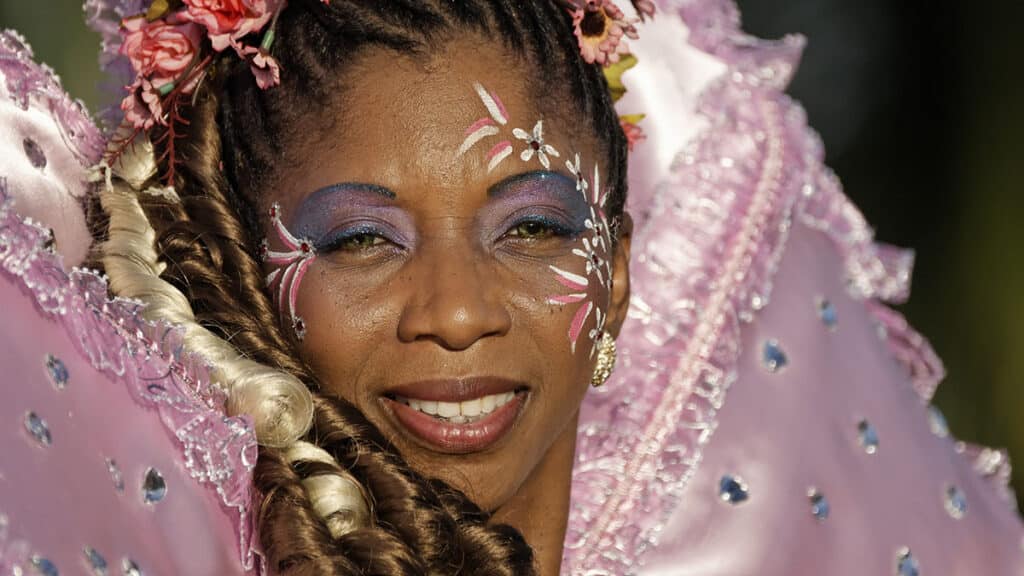
International Creole Day, or Jounen Kwéyòl, is a celebration of our rich West Indian and Caribbean multicultural heritage. It started on the Caribbean islands of Dominica and Saint Lucia, and is now recognized by UNESCO of the United Nations.
International Creole Day
We celebrate on the last Friday of October, and in true Latin form, the party doesn’t stop until Sunday (or Monday morning). It’s very similar to an Indigenous Taíno areíto community gathering.
International Creole Day (Jounen Kwéyòl) celebrates the Caribbean and West Indian Indigenous-European-African heritage, on October 28. In the islands, the festival is celebrated from the last Friday in October to the last Sunday in October. 🇺🇸 🇫🇷 🇬🇫 🇬🇾 🇭🇹 🇱🇨 🇹🇹
Creole is Many Things
Creole is different things to different people. At its broadest, creole is a living language formed by children whose parents speak different languages. It is also a person whose heritage is part European. In popular usage, creole refers to people with a mixed French African/Indigenous heritage in the West Indies and the Caribbean. We say “African/Indigenous” because both communities mixed together when they escaped the colonizers in the countryside.
In the Caribbean, creole is often code for the Haitian Diaspora. Haiti is one of the cores of African Diaspora culture in the Americas. Haitians speak French or Kreyòl, a beautiful language. We like hearing it. The Haitian Revolution spread a Diaspora across the Caribbean, including to New Orleans, Trinidad, and French Guiana. The Creole presence is hidden under layers of colonization and blending, even in places that don’t speak French anymore. From New Orleans we got Mardi Gras and jazz. From Trinidad, we got Caribbean Carnival, calypso and soca. Both New Orleans and Trinidad now speak English, but the culture is creole. Trinidad has another layer of South Asian culture.
In the Colonial Era, Creole had another meaning. Colonial society was very stratified. Colonizers born in Europe had the highest status and could get away with pretty much anything. The second class was the Creoles, or in Spanish, “Criollos.” They were the children of colonizers, usually with African/Indigenous mothers. They pretty much ran things for their parents. Creoles were and are a highly educated and talented creative community.
Nowadays creole usually means a person from Haiti, New Orleans, or the French or formerly French-speaking Caribbean islands. It also means something good from the Americas.
Creole languages are created by the children of multicultural parents. They adopt words and grammar from both languages and create their own new language. Most Caribbean countries and many African countries speak a creolized version of the colonizer’s language. Puerto Ricans don’t speak Spanish, they speak Puerto Rican. Dominicans don’t speak Spanish, we speak Dominican. Of course, many people speak the colonizer’s language perfectly, but most common people speak a local creole form. There are even regional dialects in some very small islands. Loan words from Africa can also come from Arabic because Arab traders ran the coastal trade around Africa.
One of the cool things about creole languages is the way people stretch words. This is what made hip hop so unique. Some African Americans speak a creolized form of American English. The same thing happened in reggaeton where singers stretched words in wonderful ways.
By the way, in case you haven’t noticed, Creole is Beautiful!
Personally Speaking
Editor “Kíko” Keith
I have a creole experience in my own life. I’m born and raised American, but my mother is Canadian and my father was Thai. He was a native Thai speaker. English was his third language. Speaking with my Dad, I would automatically match his speech patterns, grammar, unique words, and expressions. It happened naturally. I spoke my own “creole” language with him, and only with him.
But this is how creole languages are formed. Children blend the two languages of their parents. They create a new hybrid language that is unique and has its own rules.
